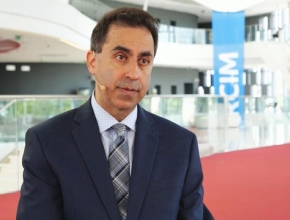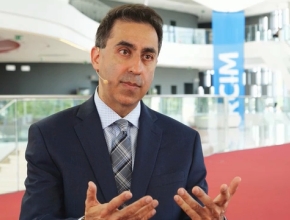What is the recommended management of opioid-induced androgen deficiency?
Jenny Legassie: Opioid-induced androgen deficiency is actually a very common side effect of long-term opioid use. However, clinically we do tend to miss it. Opioid-induced androgen deficiency is the result of opioids having a direct effect on the opioid receptors in the hypothalamus. This then turns off or decreases the pulsatile release of gonadotropin-releasing hormone, which then of course decreases the release of luteinizing hormone (LH) and follicle-stimulating hormone (FSH) and ultimately testosterone and estradiol. There is also a suggestion that opioids may have a direct impact on the gonads themselves, thus reducing the release of testosterone and estradiol even more.
What does this mean clinically? From studies of patients who have had intrathecal administration of opioids we can see that testosterone levels decrease within about half an hour. From a single dose it may take 24 to 72 hours for the testosterone level to return to normal. In patients using high doses and with chronic use you may actually have to stop the medication for up to a month before levels resume normal.
Side effects that you would see, or symptoms from this, include fatigue, loss of muscle mass, loss of strength. In severe cases you can see anemia and osteoporosis. In women you may see development of facial hair as well as irregularities or complete absence of menstrual cycles, and in men erectile dysfunction and decreased libido are quite common.
In terms of management, the first step is noticing that it is there. We should be screening our patients at every visit, particularly those on very high doses or who have used this for a long time. Ultimately, there are screening tools available. The ADAM screening tool is a very nice tool with about 7 questions to screen for androgen deficiency in men. However, you can simply ask your patients, “Tell me about your energy, your libido.” In women physical examination will reveal facial hair. We can be screening quite simply and quickly in our clinics. We should be assessing their hemoglobin and their bone density, probably once a year for the first few years and then depending on the results we could reduce that frequency.
In terms of management and treatment, supplementation is the way to go if you are unable to wean those opioids. Dehydroepiandrosterone (DHEA) supplements for women have been shown to bring their estradiol back into normal levels, and both topical and injectable testosterone has been shown to increase testosterone to normal levels in men. As of this point we do not know what the appropriate level for replacement is, but we recommend titrating to a normal laboratory value.
 English
English
 Español
Español
 українська
українська











